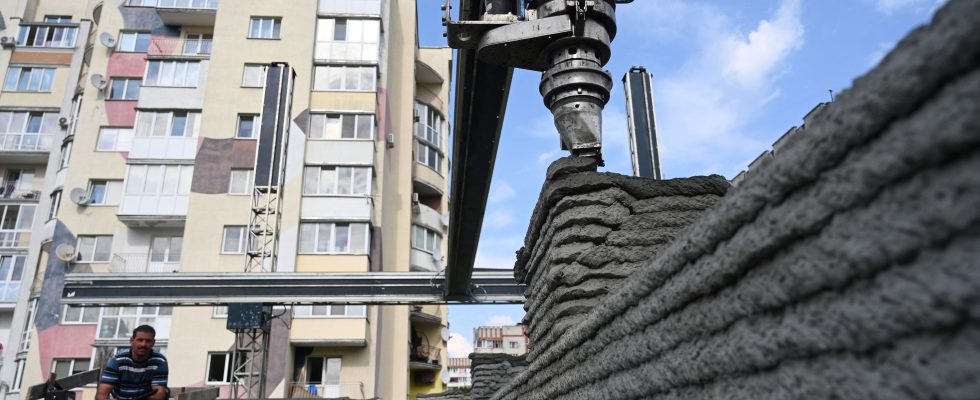It’s not much, concrete. Water, sand, gravel, cement. But for Anna Vassilenko, it is above all hope. In Lviv, in western Ukraine, this engineer observes the walls of a school “printed” by a 3D printer. This rather special machine, as large as a house, is mounted on beams and pours concrete layer by layer, forming walls which will be the walls of the future building. Throughout the country, “we have to rebuild schools, nurseries, housing… Everything has to be redone, comments this director of a large architectural company. We have a lot of hope in this 3D technology, which will make it possible to rebuild Ukraine faster.” Since the start of the invasion, nearly 3,428 schools have been damaged in Ukraine and 365 razed. Only one in three children receives face-to-face education, according to Unicef.
In Lviv, therefore, strikes remain rare. But the thousand students at school 23, right next to the construction site, follow online classes every other week. With the arrival of many refugees, “we could no longer push the walls,” explains Lydia Pylyptchak, a math teacher. The refugees first came from Boutcha and Irpin, then from the East and the South. Some remained. In Luhansk, Donetsk, Mariupol and Melitopol, they have nowhere to return.” It was without counting on the slightly crazy idea of a Frenchman, who arrived in Ukraine somewhat by chance.
“Need schools? Print them!”
After taking care of transporting thousands of tons of humanitarian aid and chartering buses, Jean-Christophe Bonis, an entrepreneur of Lille origin who lived in Warsaw before the war, went to Lviv in the spring of 2022 This city of 700,000 inhabitants, located 70 km from the Polish border, then welcomed thousands of displaced people from the east of the country and humanitarian aid. When the entrepreneur met the mayor, Andriy Sadovy, he expressed his long-term concerns. Not enough housing and infrastructure to accommodate those who decide to stay, not enough schools to accommodate the children. “And why don’t you print them?” suggested the Frenchman.
3D printing of buildings first developed in Japan, before spreading to Germany. Jean-Christophe Bonis then founded an NGO, Team4UA, and formed a partnership with the Danish company Kobot, market leader, which lent them a printer for two months. “These industrial printers lay layers of quick-drying concrete according to the plan given to it. It’s like classic concrete, you just have to add 1% additives to the material,” explains Evhen Marchenko, engineer. To “print” a building, it takes 40 hours and two operators. “There is a real need to automate, especially since there is a shortage of labor with all the workers who are on the front line,” explains Jean-Christophe Bonis. A third of the employees of the construction companies – for those who are still alive – are in the army.” The process is not cheaper than conventional construction, “but much faster”, continues the Frenchman.
Economies of scale
The foundation, which devotes 60% of its activity to humanitarian distributions on the front line, would like to acquire two printers, one of which is equipped with a moving arm to shape the details. Each costs $1.5 million. But how to make this investment profitable? By building several schools on the same model, in order to achieve economies of scale, imagines Jean-Christophe Bonis, who would already like to finish his prototype. The NGO is still missing 600,000 euros to complete the plumbing, electricity and roofing.
At the same time, Team4UA is working on the reconstruction of a bridge in Kherson. The beams can be printed in 48 hours compared to a month for a classic bridge. The NGO has already signed a memorandum with the Ukrainian Reconstruction Agency, but it lacks funding. “With these pilot projects, we want to prove that technology can help the country rebuild more quickly,” he continues. “Then it will be up to the private sector to take over.” In any case, this model could flourish. “I already have proposals from Turkey, they would like to quickly rebuild the buildings destroyed in February 2023 by the earthquake,” slips the Lille resident.
.
